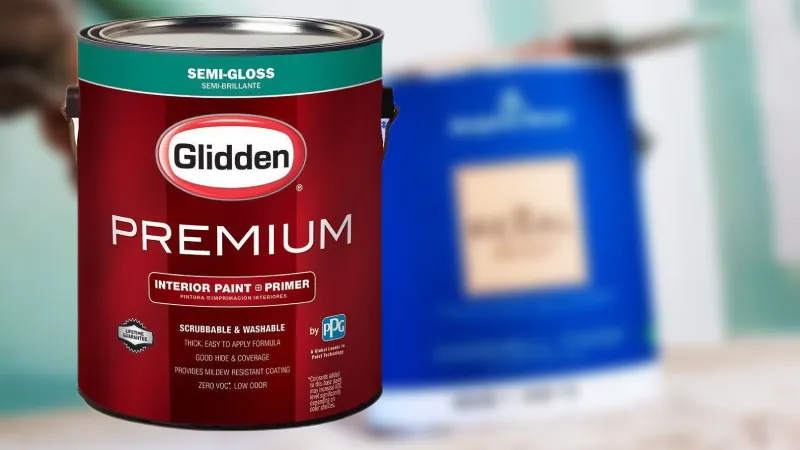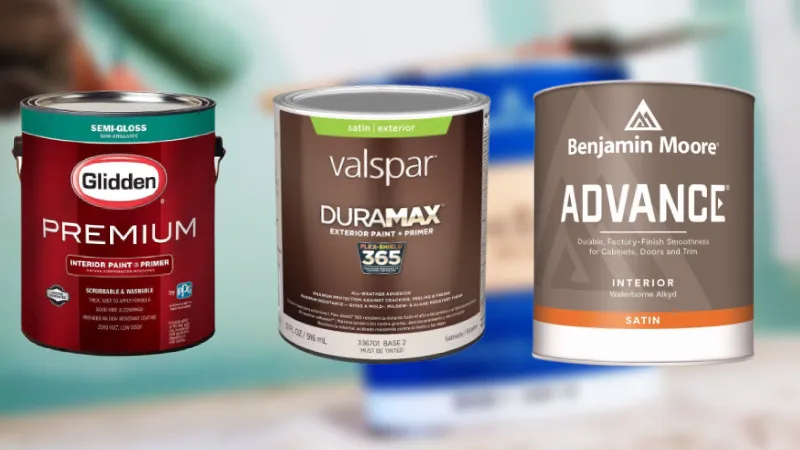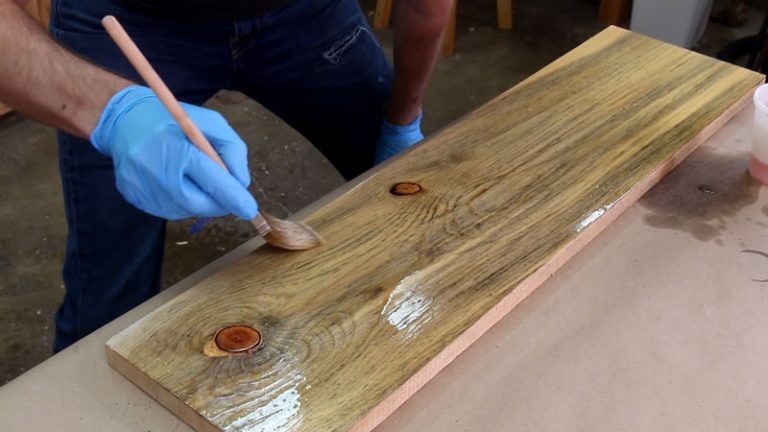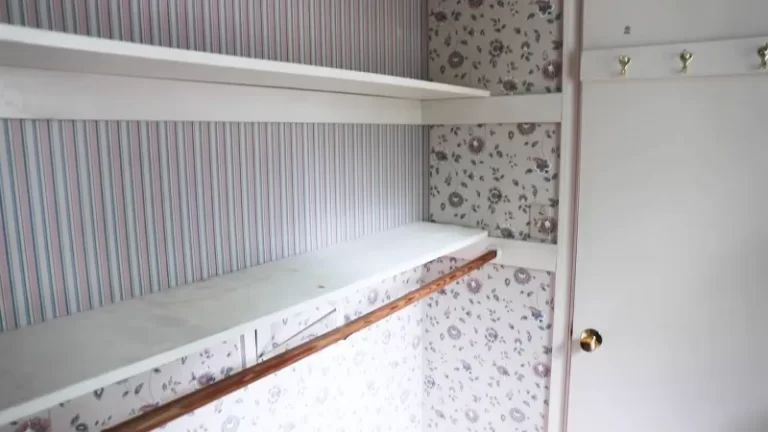What is Base 1 2 3 and 4 Paint? – Comparison

Base 1 paint is a type of paint medium specifically formulated for creating lighter, pastel colors. It is made with a clear base, which allows for the addition of colorants to create the desired shade.
The clear base also allows for the creation of brighter shades, no matter how much colorant is added. The use of paint bases is an important aspect of painting, as it allows artists and DIY enthusiasts to mix and create custom colors that may not be available off the shelf.
Understanding the different types of paint bases and their characteristics can help you achieve the desired results in your painting projects.
You'll Learn About
Base 1 Paint
Base 1 paint, also known as a pastel base, is a paint medium specifically formulated for mixing lighter colors. It is typically used to create pastels, which are lighter shades of color that do not produce dark tones.
Base 1 paint is made with a clear base, which means that it is transparent and allows for the addition of colorants to create the desired shade. The clear base also allows for the creation of brighter shades, no matter how much colorant is added.
In contrast to base 1, base 4 paint is used for creating intense, darker colors and has a formulation that allows for more room in the can for the addition of colorants. It is important to note that base 1 paint is not meant to be used on its own, but rather as a medium for mixing and creating custom colors.
What is Base 1 Paint?
Base 1 paint, also known as a pastel base, is a type of paint medium specifically formulated for creating lighter, pastel colors. It is made with a clear base, which means that it is transparent and allows for the addition of colorants to create the desired shade.
The clear base also allows for the creation of brighter shades, no matter how much colorant is added. This makes base 1 paint an ideal choice for creating softer, more muted colors, as well as for adding highlights and accents to a painting.
In contrast to base 1, other paint bases, such as base 4, are formulated for creating intense, darker colors and have a different composition that allows for more room in the can for the addition of colorants.
Ideal for Light Color
Base 1 paint is a type of paint that is ideal for creating light colors. It can be used as is, without any tinting, or can be tinted to produce lighter shades. This type of paint is often preferred by those who want to create a bright and airy atmosphere in their space, as it reflects light well and adds a fresh and clean look to the walls.
Versatile
Base 1 paint is versatile and can be used in various rooms of the house, including the living room, bedroom, and bathroom. The paint can be applied to different surfaces, including walls, ceilings, and woodwork, and is often used to create a uniform color scheme throughout the house.
Easy to Work With
One of the key benefits of using base 1 paint is that it is easy to work with. The paint is smooth and consistent, making it easy to spread evenly and achieve an even finish. Additionally, it dries quickly, which is useful for those who need to complete their painting project within a limited timeframe.
Cost Effective
Base 1 paint is also a cost-effective option, as it is typically less expensive than other types of paint. This is due to the fact that it requires less tinting to produce lighter colors, which results in lower production costs.
Base 1 paint is a great option for those who want to create light and bright spaces. Whether you’re looking to create a fresh and clean look in your home or simply want to make a small room appear larger, base 1 paint is an excellent choice that offers versatility, affordability, and ease of use.
Base 2 Paint
Base 2 paint is an excellent option for those who want to add some color and warmth to their space. Whether you’re looking to create a cozy and inviting atmosphere in your home or simply want to add some interest to an otherwise bland room, base 2 paint is a great choice that offers versatility, durability, and affordability.
Medium Colors
Base 2 paint is a type of paint that is designed for creating medium colors. Unlike base 1 paint, which can be used as is or tinted to lighter colors, base 2 paint must be tinted to achieve the desired shade. This type of paint is often used to create a warm and inviting atmosphere in a space, as the medium colors can add depth and richness to the walls.
Areas That Require a Bit More Color
Base 2 paint is typically used in areas that require a bit more color, such as the dining room, kitchen, or a cozy family room. It is also often used to create an accent wall, to add interest and dimension to a space.
Versatile
One of the key advantages of base 2 paint is that it is versatile and can be tinted to a wide range of colors, from light tans and beiges to deeper shades of red, blue, and green. This allows for a lot of creative freedom when it comes to color selection.
Durable Than Lighter Paints
Additionally, base 2 paint is typically more durable than lighter paints, as it contains more pigments and other ingredients that help to protect the paint film from damage. This makes it a great option for high-traffic areas, such as the kitchen or hallway.
Base 3 Paint
Base 3 paint is a great option for those who want to create a dramatic and bold look in their space. Whether you’re looking to make a statement in your home office or simply want to add some sophistication to a formal living room, base 3 paint is a great choice that offers excellent coverage, durability, and affordability.
Creating Dark Colors
Base 3 paint is a type of paint that is designed for creating dark colors. Unlike base 1 paint, which can be used as is or tinted to lighter colors, and base 2 paint, which must be tinted to achieve medium colors, base 3 paint must be tinted to produce the desired shade. This type of paint is often used to create a dramatic and bold look in a space, as the dark colors can add richness and sophistication to the walls.
Bold Statement
Base 3 paint is typically used in areas where a bold statement is desired, such as a home office, library, or accent wall. It is also often used in spaces that require a more formal or elegant look, such as a dining room or living room.
Excellent Coverage and Hiding Power
One of the key benefits of base 3 paint is that it provides excellent coverage and hiding power, due to the high concentration of pigments and other ingredients. This makes it a great option for covering dark or brightly colored walls, or for hiding imperfections in the surface.
Durable Than Lighter Paints
Additionally, base 3 paint is typically more durable than lighter paints, as it contains more pigments and other ingredients that help to protect the paint film from damage. This makes it a great option for high-traffic areas, such as the hallway or entryway.
Base 4 Paint
Base 4 paint is an excellent option for those who want to create a bold and dramatic look in their space. Whether you’re looking to make a statement in a home theater or simply want to add some luxury and sophistication to a bedroom, base 4 paint is a great choice that offers excellent color depth, vibrancy, and durability.
Deep and Intense Colors
Base 4 paint is a type of paint that is designed for creating deep and intense colors. Unlike the other paint bases (1, 2, and 3), base 4 paint allows for a greater amount of room in the paint can for the addition of pigments and other ingredients, which results in a higher concentration of color. This makes it ideal for creating rich and intense shades that are not possible with other paint bases.
Bold and Dramatic Look
Base 4 paint is often used in areas where a bold and dramatic look is desired, such as an accent wall, home theater, or a bedroom. The deep and intense colors can add a sense of luxury and sophistication to the space.
Excellent Color Depth and Vibrancy
One of the key benefits of using base 4 paint is that it provides excellent color depth and vibrancy, which is not possible with lighter paints. The high concentration of pigments and other ingredients means that the color will remain rich and intense over time, even with exposure to sunlight and other environmental factors.
Durable Than Lighter Paints
Additionally, base 4 paint is typically more durable than lighter paints, as it contains more pigments and other ingredients that help to protect the paint film from damage. This makes it a great option for high-traffic areas, such as the hallway or entryway.
Comparison With Other Paint Bases
Base 4 paint is another type of paint base that is formulated for creating intense, darker colors. It is made with a different composition than base 1 paint, which allows for more room in the can for the addition of colorants.
This makes it easier to mix and create deep, rich shades that may not be possible with base 1 paint. In contrast, base 1 paint is made with a clear base and is specifically formulated for creating lighter, pastel colors.

Its clear base allows for the creation of brighter shades, no matter how much colorant is added.
The formulation of each paint base plays a significant role in the amount of colorant that can be added to the paint. The base of a paint determines its overall consistency, drying time, and ability to accept colorants.
For example, base 1 paint has a clear base and is formulated for creating lighter, pastel colors, so it may not be able to accept as much colorant as base 4 paint, which is formulated for creating intense, darker colors.
Understanding the characteristics and formulations of different paint bases can help you choose the right one for your painting project and achieve the desired results.
Comparison Table of Paint Bases
| Feature | Base 1 Paint | Base 2 Paint | Base 3 Paint | Base 4 Paint |
|---|---|---|---|---|
| Color Range | Lighter Tones | Medium Tones | Darker Tones | Deep and Intense Tones |
| Purpose | Can be used as is or tinted | Must be tinted | Must be tinted | Must be tinted |
| Use | Ideal for light and bright rooms | Ideal for medium and warm-toned rooms | Ideal for bold and dramatic spaces | Ideal for creating deep and intense colors |
| Durability | Good | Good | Good | Excellent |
| Coverage | Good | Good | Excellent | Excellent |
| Color Depth | Good | Good | Good | Excellent |
| Application | Can be applied with a brush, roller or spray | Can be applied with a brush, roller or spray | Can be applied with a brush, roller or spray | Can be applied with a brush, roller or spray |
| Drying Time | Average | Average | Average | Average |
| VOC Content | Low to medium | Low to medium | Low to medium | Low to medium |
| Price | Affordable | Affordable | Affordable | Affordable to moderately priced |
How to Use Base 1 Paint
Using base 1 paint to mix and create custom colors is a simple process that can be done at a paint store or at home with the right tools and materials. Here is a step-by-step guide on how to use base 1 paint:
Gather Your Materials
You will need base 1 paint, colorants, mixing cups and sticks, and a scale for measuring the amount of paint and colorants
Determine the Amount of Base 1 Paint You Will Need
Consider the size of your painting surface and the desired coverage of your custom color
Choose the Colorants You Want to Use
There are many different types of colorants available, including pigments, dyes, and toners. Consult a color wheel or a paint retailer to choose the right colorants for your desired shade
Mix the Paint and Colorants
Using a mixing cup and stick, measure out the desired amount of base 1 paint and add the colorants according to the desired shade. Mix the paint thoroughly until the color is evenly distributed
Test the Color
Before applying the paint to your surface, it is a good idea to test the color on a sample board or piece of paper to ensure that it is the desired shade. If the color is not quite right, adjust the amount of colorants until you achieve the desired shade
Here are a few tips for achieving the desired shades and tones when using base 1 paint:
Start With a Small Amount of Colorant and Gradually Add More Until You Achieve the Desired Shade
It is easier to darken a color than it is to lighten it, so it is better to err on the side of caution
Use a Scale to Measure the Amount of Paint and Colorants
This will help ensure that you are mixing the right proportions of each
Test the Color on a Sample Board or Piece of Paper Before Applying It to Your Painting Surface
This will give you a chance to make any necessary adjustments before committing to the final color
Experiment With Different Combinations of Colorants to Create Unique Shades and Tones
The wide range of colorants available allows for endless possibilities when it comes to creating custom colors
How to Use Base 1 Paint Properly?
Here are a few additional tips for using base 1 paint:
Use a Quality Paint Brush
A good paint brush will make a significant difference in the final result of your painting project. Look for brushes with natural bristles, as they tend to hold their shape and produce a smoother finish than synthetic bristles
Protect Your Work Surface
Cover your work surface with a drop cloth or plastic sheet to protect it from spills and splatters
Clean Your Tools and Materials Promptly
Clean your paint brushes and mixing cups immediately after use to prevent the paint from drying and ruining them
Store Paint Properly
Keep your base 1 paint and other paints in a cool, dry place, away from direct sunlight and heat. This will help extend the shelf life of the paint
Use a Paint Conditioner
A paint conditioner can help improve the flow and leveling of the paint, resulting in a smoother finish. It is especially useful for base 1 paint, which tends to be more delicate and prone to brush marks
Experiment With Different Techniques
There are many different techniques you can use when painting with base 1 paint, such as blending, glazing, and layering. Experimenting with these techniques can help you achieve a wide range of effects and add depth and interest to your paintings
Conclusion
In conclusion, base 1 paint is a type of paint medium specifically formulated for creating lighter, pastel colors. It is made with a clear base, which allows for the creation of brighter shades and the addition of colorants to create the desired shade.
Base 1 paint is an ideal choice for creating softer, more muted colors and for adding highlights and accents to a painting. In contrast to base 1, other paint bases, such as base 4, are formulated for creating intense, darker colors and have a different composition that allows for more room in the can for the addition of colorants.
Understanding the characteristics and uses of different paint bases can help you choose the right one for your painting project and achieve the desired results. We encourage readers to experiment with different paint bases and create their own unique colors.




